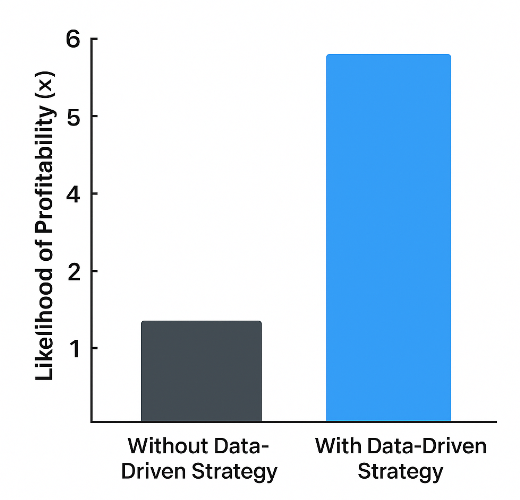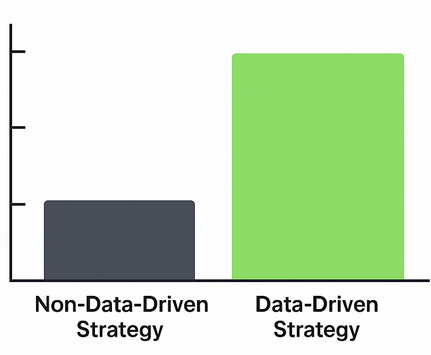Data-driven advertising focuses on using analytics, audience behavior, and performance metrics to guide marketing decisions. Instead of relying on guesswork, it empowers advertisers to make informed choices based on concrete evidence.
Research shows that 64% of marketing executives strongly believe data-driven strategies are essential to success in today’s competitive landscape. Yet, many still struggle to connect analytics to tangible financial outcomes.
Why Data Matters
Every interaction—clicks, views, purchases—creates valuable information. When analyzed correctly, this data reveals patterns that drive smarter campaigns. Data allows marketers to:
-
Identify high-value customer segments.
-
Deliver personalized ad experiences.
-
Optimize spend by cutting underperforming channels.
-
Forecast future results with greater accuracy.

Companies that embrace data-driven strategies are six times more likely to be profitable year-over-year
According to Forbes, companies that leverage customer analytics outperform competitors by 85% in sales growth and over 25% in gross margin.
Core Principles of Data-Driven Advertising
-
Precision Targeting
Use behavioral, demographic, and interest-based data to deliver ads that resonate with specific audiences. -
Continuous Optimization
Constantly test, measure, and refine campaigns using key performance metrics such as CTR, CPA, and ROAS. -
Personalization at Scale
Integrate automation and audience segmentation to create individualized ad experiences across platforms. -
Predictive Decision-Making
Machine learning models can forecast campaign performance, enabling better planning and reduced waste.
From Insights to Action
The most successful advertisers are not just collecting data—they are acting on it. By aligning insights with strategic goals, marketing teams can translate analytics into measurable results.

Data-driven strategies can deliver five to eight times the return on investment compared to non-data-driven approaches
For instance:
-
Identify which channels drive the most conversions.
-
Use A/B testing to validate creative direction.
-
Reinvest budget into top-performing audience segments.
A recent industry report found that marketers using real-time analytics are 30% more likely to achieve revenue growth compared to those who rely on historical data alone.
Measuring Success
The final step in the data-driven journey is evaluation. Businesses should track how data-informed decisions influence bottom-line performance. Metrics like customer lifetime value (CLV), conversion rates, and ROAS help determine the effectiveness of data applications.
With each campaign, advertisers refine their approach, improving accuracy and profitability over time.
Conclusion
Data-driven advertising transforms insight into profit. By grounding decisions in real data, marketers gain control, clarity, and confidence in their strategies. In today’s digital marketplace, those who fully embrace analytics are the ones leading in growth, efficiency, and long-term success.
You may also like:

